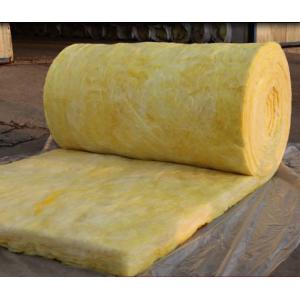

Add to Cart
Fiberglass Wool Roll Heat Insulation Material Blanket 48kg/m3 Glasswool 25mm 50mm Glass Wool Price
item | value |
Warranty | 2 years |
After-sale Service | Onsite Installation |
Project Solution Capability | 3D model design |
Application | Workshop |
Design Style | Industrial |
Place of Origin | China |
Brand Name | chongqing haike |
Product Name | Glass Wool Felt Rolls |
Material | Glass Wool |
Density | 12-48kg/m3 |
Thickness | 40-200mm |
MOQ | 100m2 |
Width | 1200mm |
Length | customized |
Centrifugal glass wool is a porous sound-absorbing material with good sound absorption properties. Centrifugal glass wool can absorb sound not because of the rough surface, but because there are a large number of tiny pores and holes connected inside and outside. When sound waves are incident on the centrifugal glass wool, the sound waves can follow the pores into the interior of the material, causing the vibration of air molecules in the gaps. Due to the viscous resistance of air and air molecules and the friction of the pore wall, sound energy is converted into heat energy and loss.
Sound absorption performance
Centrifugal glass wool has good sound absorption performance for
sound in high frequency. The main factors affecting the sound
absorption performance of centrifugal glass wool are thickness,
density and air flow resistance. Density is the weight of the
material per cubic meter. Air flow resistance is the ratio of air
pressure and air flow rate on both sides of the material at unit
thickness. Air flow resistance is the most important factor
affecting the sound absorption performance of centrifugal glass
wool. Flow resistance is too small, indicating that the material is
sparse, air vibration is easy to pass through, the sound absorption
performance decreases; flow resistance is too large, indicating
that the material is dense, air vibration is difficult to pass
into, the sound absorption performance also decreases. For
centrifugal glass wool, the best flow resistance exists for sound
absorption performance.
In actual engineering, it is difficult to determine the air flow
resistance, but can be roughly estimated and controlled by the
thickness and weight.
1, as the thickness increases, the low frequency absorption
coefficient increases significantly, but the high frequency change
is not large (high frequency absorption is always larger).
2, the thickness remains the same, the capacity increases, the low
frequency absorption coefficient also increases; but when the
capacity increases to a certain extent, the material becomes dense,
the flow resistance is greater than the best flow resistance, the
absorption coefficient decreases instead. For the thickness of more
than 5cm of 16Kg/m3 of centrifugal glass wool, low frequency 125Hz
is about 0.2, high frequency (>500Hz) absorption coefficient is
close to 1. When the thickness continues to increase from 5cm, the
absorption coefficient of low frequency gradually increases, when
the thickness is greater than 1m or more, the absorption
coefficient of low frequency 125Hz will also be close to 1. When
the thickness remains unchanged and the capacity increases, the low
frequency absorption coefficient of centrifugal glass wool will
also continue to improve, when the capacity is close to 110kg/m3
sound absorption performance reaches its maximum, 50mm thick,
frequency 125Hz at close to 0.6- 0.7. When the capacity exceeds
120kg/m3, the sound absorption performance decreases, because the
material becomes dense and the medium and high frequency sound
absorption performance is greatly affected, and when the capacity
exceeds 300kg/m3, the sound absorption performance decreases a lot.
The thickness of acoustic glass wool commonly used in building
acoustics are 2.5cm, 5cm, 10cm, with a capacity of 16, 24, 32, 48,
80, 96, 112kg/m3. 5cm thick, 12-48kg/m3 centrifugal glass wool is
usually used.
